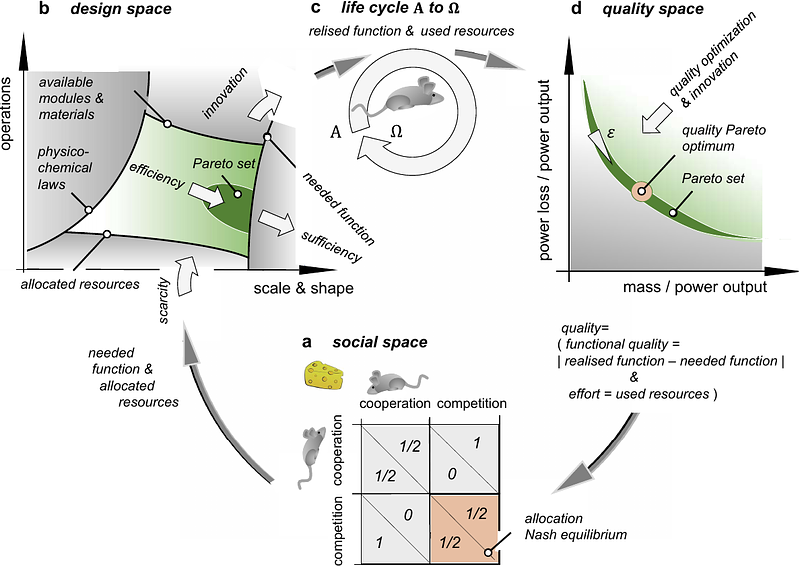General Theory of Metabolism related to Animal's Taxonomy and Size

General Theory of Metabolism related to Animal's Taxonomy and Size
Pelz, P. F.
AbstractEach mammal has a budget of approximately one billion heartbeats after birth. This is consistent with their heart rate and life span, which scale with their mass to the power -1/4 and 1/4 respectively, given a complex cardiovascular system. However, the underlying empirical law, i.e., Kleiber\'s law, according to which the metabolic rate scales with the mass to the power of 3/4, applies to all animals: for instance, flatworms with a most simple vascular system and a size slightly above the diffusion limit on growth show the same metabolic scaling as mammals. To date, there is no concise theory that is consistent with cell metabolism and compatible with physiological laws, e.g., that the volume flow scales with the capillary diameter to the power of three (Murray\'s law). In this paper\'s we present how cell metabolism determines the scaling of the organism\'s metabolic rate via the Metabolic Module (MM), a cylinder formed by the organism\'s cells with a concentric capillary - sized and shaped with scarcity. Evolutionary changes from one taxonomic class to the next led to an unsteady increase in the number of MMs: the metabolism of protists and planarians, e.g., flatworms, is given by one MM only; for ectotherms, i.e., cold-blooded organisms, one thousand and for endotherms, i.e., warm-blooded organisms, nearly one hundred million MMs working together. Special cases, such as diffusion-limited metabolism and the 3/4 power law are asymptotes of the presented general theory. The presented general theory of metabolism offers valuable insights for the targeted development of artificial tissues.